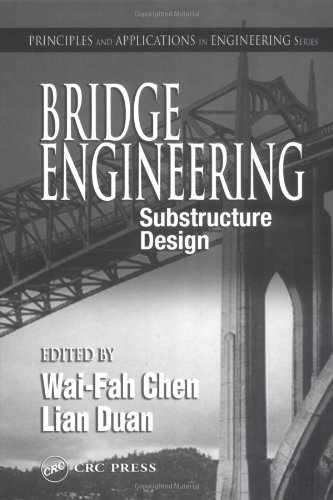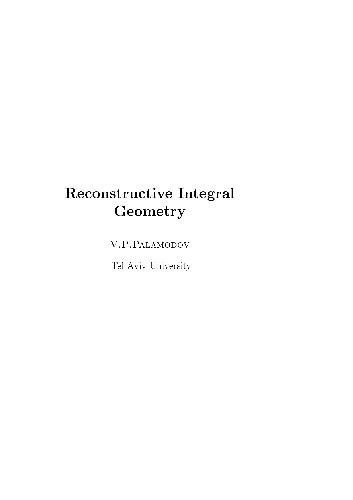W.F. Chen, Lian Duan0849316812, 9780849316814
Table of contents :
BRIDGE ENGINEERING: Substructure Design……Page 1
Foreword……Page 3
Preface……Page 4
Wai-Fah Chen……Page 5
Lian Duan……Page 6
Contributors……Page 7
Contents……Page 8
1.2 Types of Bearings……Page 10
Table of Contents……Page 0
1.2.3 Roller Bearings……Page 11
1.2.4 Elastomeric Bearings……Page 12
1.2.5 Pot Bearings……Page 13
1.3.1 Determination of Functional Requirements……Page 14
1.4.1 Design Procedure……Page 16
1.4.2 Design Example (Figure 1.4)……Page 17
References……Page 21
2.2.1 General……Page 22
2.2.2 Selection Criteria……Page 23
2.3 Design Loads……Page 25
2.3.1 Live Loads……Page 26
2.4.1 Overview……Page 28
2.4.2 Slenderness and Second-Order Effect……Page 30
Interaction Diagrams……Page 32
2.4.3.2 Shear Strength……Page 34
2.4.3.3 Ductility of Columns……Page 36
Compressive Resistance……Page 41
Flexural Resistance……Page 43
References……Page 44
3.1 Introduction……Page 45
3.3 Aesthetics……Page 46
3.4 Conceptual Design……Page 48
3.4.1 Materials……Page 49
3.4.2 Forms and Shapes……Page 51
3.4.3 Erection……Page 54
3.5.1 Design Loads……Page 55
3.5.2 Design Considerations……Page 57
3.6 Construction……Page 58
3.7 Summary……Page 59
References……Page 60
Open-End and Closed-End Abutments……Page 61
4.2.2 General Design Considerations……Page 63
4.2.3 Seismic Design Considerations……Page 65
Monolithic Abutment or Diaphragm Abutment (Figure 4.5)……Page 67
Seat-Type Abutment (Figure 4.6)……Page 68
Abutment Drainage……Page 70
Miscellaneous Details……Page 71
4.2.5 Design Example……Page 72
Minimum Requirements……Page 82
Lateral Load……Page 84
4.3.3 Cantilever Retaining Wall Design Example……Page 88
Example……Page 91
4.3.5 Reinforced Earth-Retaining Structure……Page 93
Earth Pressure with Seismic Effects……Page 96
References……Page 97
5.1 Introduction……Page 98
5.2 Field Exploration Techniques……Page 99
5.2.1.1 Wet (Mud) Rotary Borings……Page 100
5.2.2.1 Driven Sampling……Page 101
5.2.4 In Situ Testing……Page 102
5.2.4.2 In Situ Vane Shear Tests……Page 103
5.2.5 Downhole Geophysical Logging……Page 104
5.2.7 Geophysical Survey Techniques……Page 107
5.2.7.4 High-Resolution Seismic Reflection and Subbottom Profilers……Page 109
5.2.7.5 Seismic Refraction……Page 110
5.2.7.7 Resistivity Surveys……Page 111
5.3 Defining Site Investigation Requirements……Page 112
5.3.3 Numbers of Explorations……Page 113
5.4.2.1 Soil Classification and Index Testing……Page 114
5.4.2.7 Dynamic Tests……Page 115
5.5.2 Factual Data Presentation……Page 116
5.5.4 Definition of Soil Properties……Page 118
5.5.6 Application of Computerized Databases……Page 120
6.1 Introduction……Page 121
6.2 Design Requirements……Page 122
6.4.1 Bearing Capacity Equation……Page 123
Soil Density……Page 126
Eccentric Load……Page 129
6.4.2 Bearing Capacity on Sand from Standard Penetration Tests (SPT)……Page 130
6.4.4 Bearing Capacity from Pressure-Meter Tests (PMT)……Page 132
6.4.6 Predicted Bearing Capacity vs. Load Test Results……Page 133
6.5 Stress Distribution Due to Footing Pressures……Page 134
6.5.3 Simplified Method (2:1 Method)……Page 136
6.6 Settlement of Shallow Foundations……Page 137
6.6.1 Immediate Settlement by Elastic Methods……Page 139
CPT Method……Page 144
Consolidation Settlement……Page 147
6.7 Shallow Foundations on Rock……Page 148
6.7.2 Bearing Capacity of Fractured Rock……Page 149
Acknowledgment……Page 150
References……Page 151
7.1 Introduction……Page 155
7.2.2 Typical Bridge Foundations……Page 156
7.2.3 Classification……Page 157
Large-Diameter Driven, Vibrated, or Torqued Steel Pipe Piles……Page 159
Cofferdam and Shoring……Page 160
7.2.5 Characteristics of Different Types of Foundations……Page 161
7.2.6 Selection of Foundations……Page 163
Capacity in Long-Term and Short-Term Conditions……Page 164
7.3.5 Other Design Issues……Page 165
7.4.1 General……Page 168
Sand……Page 170
Empirical Methods……Page 171
7.4.3 Side Resistance……Page 172
Method from Elasticity Solutions……Page 175
Method by Vesic [79]……Page 176
Method Using Localized Springs: The t-z and Q-z method……Page 178
Ultimate Lateral Pressure……Page 179
Ultimate Lateral Capacity for the Free-Head Condition……Page 181
Analytical Model and Basic Equation……Page 182
p-y Curves for Soft Clay……Page 183
p-y Curves for Sands……Page 184
7.5.4 Lateral Spring: p-y Curves for Rock……Page 187
7.6.1 General……Page 188
7.6.2 Axial Capacity of Pile Group……Page 189
7.6.4 Lateral Capacity and Deflection of a Pile Group……Page 190
7.7.1 Seismic Lateral Capacity Design of Pile Groups……Page 192
7.7.2 Determination of Pile Group Spring Constants……Page 193
7.7.3 Design of Pile Foundations against Soil Liquefaction……Page 194
References……Page 195
8.1 Introduction……Page 199
8.2 Isolated Columns……Page 200
8.3 Framed Columns — Alignment Chart Method……Page 201
8.3.1 Alignment Chart Method……Page 202
8.3.2 Requirements for Braced Frames……Page 203
8.3.3.1. Duan-King-Chen Equations……Page 205
8.4 Modifications to Alignment Charts……Page 206
8.4.2.1. Fictitious Restraining Beam Approach……Page 207
8.4.3 Column Restrained by Tapered Rectangular Girders……Page 208
8.5.1 LeMessurier Method……Page 211
8.5.2 Lui Method……Page 212
8.6 Crossing Bracing Systems……Page 214
8.7.1 Latticed Members……Page 215
8.7.5 Built-Up Members……Page 217
8.9 Summary……Page 218
References……Page 219
Notations……Page 221
9.1.1 Background……Page 222
9.2 Initial Planning……Page 224
9.2.5 Protection Systems……Page 225
9.4.1.1 Ships……Page 226
9.4.2 Vessel Fleet Characteristics……Page 227
9.5.1 Risk Acceptance Criteria……Page 228
9.5.2.4 Geometric Probability, PG……Page 229
9.6.1 Ship Impact……Page 230
9.6.3 Application of Impact Forces……Page 233
9.7 Bridge Analysis and Design……Page 234
9.8.1 Physical Protection Systems……Page 235
9.9 Conclusions……Page 236
References……Page 237
10.2.1.1 Collection of Data……Page 239
10.2.1.3.1 Rational Method……Page 240
10.2.1.3.2 Statistical Gauge Analysis Methods……Page 242
10.2.1.3.4 Regional Flood-Frequency Equations……Page 245
10.2.2.1 Runoff and Capacity Analysis……Page 246
10.2.3.1 Waterway Analysis……Page 247
10.2.2.3 Flow Velocity and Distribution……Page 248
10.3.1.1.2 Stream Contraction Scour……Page 249
10.3.1.1.4 Lateral Stream Migration……Page 250
10.3.1.2 Designing Bridges to Resist Scour……Page 251
10.3.2.1 Specific Design Approach……Page 252
10.3.2.2 Detailed Procedures……Page 253
10.3.2.3 Estimate and Evaluate Total Potential Scour Depths……Page 254
10.3.3.2.1 Office Review……Page 255
10.3.3.2.2 Bridge Scour Inspection Guidance……Page 256
References……Page 257







Reviews
There are no reviews yet.